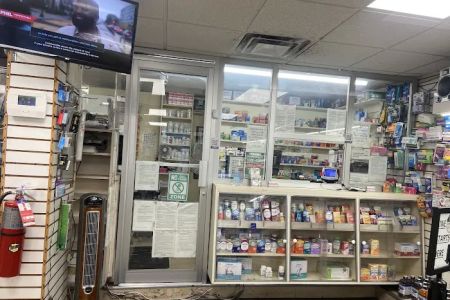Understanding Pharmacy Medication Error Reporting Systems
As a pharmacy professional, one of my primary responsibilities is to ensure that patients receive the right medications in the right doses. However, no system is perfect, and errors can sometimes slip through the cracks. That's where pharmacy medication error reporting systems come into play. These systems are vital tools designed to track, report, and ultimately reduce medication errors, which is crucial for patient safety. In this article, I’ll dive deep into what medication error reporting systems are, why they matter, and how they contribute to improving pharmacy practices.
1. What Are Pharmacy Medication Error Reporting Systems?
Pharmacy medication error reporting systems are structured methods used by healthcare providers, particularly pharmacists, to report errors in medication dispensing or administration. These systems are part of a larger effort to create a safer healthcare environment by identifying mistakes, analyzing their causes, and implementing corrective measures. The goal is not to assign blame, but rather to learn from these incidents and improve future practices.
These systems can be manual or electronic, with the latter being more common in modern pharmacy settings. In an electronic reporting system, pharmacists or other healthcare professionals can quickly log any errors or near-misses, categorizing the issue for further analysis. This real-time data allows healthcare organizations to respond more swiftly, preventing further errors.
2. Why Are Medication Error Reporting Systems So Important?
The importance of medication error reporting systems cannot be overstated. In the United States alone, millions of medication errors occur each year, some of which lead to significant patient harm or even death. By using reporting systems, pharmacists can actively participate in identifying these risks before they escalate.
Moreover, these systems contribute to creating a culture of safety in pharmacies and hospitals. When staff members feel confident that their reports will lead to meaningful change rather than punishment, they are more likely to report errors. This helps ensure that problems are addressed promptly, fostering an environment where patient safety is always the top priority.
2.1 Reducing the Risk of Adverse Events
Adverse events related to medication errors can be devastating. These incidents can lead to serious health complications, prolonged hospital stays, or even death. A robust error reporting system allows for early identification of potential hazards, such as mislabeled medications or dosage miscalculations. Once these risks are identified, pharmacies can make immediate corrections to prevent further harm to patients.
2.2 Enhancing Communication Across Healthcare Teams
Effective communication between healthcare providers is essential for minimizing errors. Medication error reporting systems provide a platform for sharing information about errors that may have occurred during the prescription, dispensing, or administration stages. This improves the overall communication within the pharmacy and among other healthcare teams, ensuring that the entire system is aware of risks and can take the necessary actions to prevent them in the future.
3. How Pharmacy Medication Error Reporting Systems Work
Medication error reporting systems typically follow a process that involves identifying, reporting, analyzing, and resolving errors. Here’s a step-by-step breakdown of how these systems generally function:
3.1 Identification of Errors
The first step is identifying a potential error. This can happen in several ways: during the dispensing process, through patient complaints, or even after the medication has been administered. Pharmacists and other healthcare staff are trained to recognize these errors and act quickly to prevent further harm.
3.2 Reporting the Incident
Once an error is identified, it needs to be reported to the proper system. Many hospitals and pharmacies use electronic systems that allow healthcare professionals to log errors immediately. The reporting system typically includes details about the error, such as the type of medication involved, the nature of the error, and any corrective actions taken.
3.3 Analyzing the Root Causes
After an error is reported, the next step is analyzing the root cause. This process involves reviewing the incident in detail to determine what went wrong and why. Factors such as workflow issues, lack of training, or poor communication may be contributing factors. Understanding these causes helps develop strategies to prevent similar errors in the future.
3.4 Implementing Solutions
Once the root causes have been identified, corrective actions are implemented. These can include changes to pharmacy procedures, additional staff training, or updates to electronic systems that alert pharmacists to potential errors before they occur. The goal is to make the pharmacy a safer place for patients and staff alike.
4. The Role of Technology in Error Reporting
Advancements in technology have dramatically improved the way medication errors are reported and tracked. Today, most pharmacies and hospitals use electronic medication error reporting systems that are integrated with other healthcare technologies like electronic health records (EHRs) and barcode scanning systems. These systems provide real-time data on medication dispensing and administration, making it easier to identify and correct errors quickly.
For example, barcode medication administration systems ensure that the right medication is being given to the right patient by scanning both the patient’s ID and the medication before administration. When paired with medication error reporting systems, these technologies can prevent many types of errors from occurring in the first place.
5. Benefits of Implementing a Medication Error Reporting System
Adopting a medication error reporting system offers several benefits beyond simply tracking errors:
5.1 Improved Patient Safety
By identifying and addressing errors quickly, pharmacies can ensure that patients are receiving safe and effective treatments. This leads to fewer adverse events and better patient outcomes, which is the ultimate goal of any healthcare setting.
5.2 Increased Accountability and Transparency
When errors are reported and analyzed, it creates a culture of accountability in the pharmacy. This transparency helps prevent mistakes from being swept under the rug and encourages staff to take responsibility for their actions. It also fosters trust between patients, healthcare providers, and the broader community.
5.3 Enhanced Continuous Improvement
Medication error reporting systems are not just about fixing individual mistakes. They are part of a broader process of continuous improvement. By consistently monitoring and analyzing errors, pharmacies can refine their processes and adopt best practices that enhance the overall quality of care.
6. Challenges in Implementing Medication Error Reporting Systems
While the benefits are clear, implementing an effective medication error reporting system does come with challenges:
6.1 Resistance to Reporting
One of the biggest hurdles to the success of these systems is staff reluctance to report errors. Some healthcare professionals may fear punishment or negative consequences, which can prevent them from reporting mistakes. To overcome this, it’s crucial to foster a non-punitive culture where the focus is on learning and improving, not assigning blame.
6.2 Data Overload
Another challenge is dealing with the sheer volume of data generated by these systems. Without proper analysis tools and trained personnel, it can be difficult to make sense of all the information and identify meaningful trends. Pharmacy leaders must ensure that the system is equipped to handle this data and provide actionable insights.
7. Conclusion: The Future of Pharmacy Medication Error Reporting
As technology continues to advance and the push for safer healthcare practices grows, medication error reporting systems will undoubtedly play an even greater role in improving pharmacy practices. These systems help pharmacies learn from their mistakes, reduce patient risk, and foster an environment where safety is prioritized. By embracing these systems, pharmacies are not only protecting their patients but also ensuring the continued trust and success of the healthcare system as a whole.














